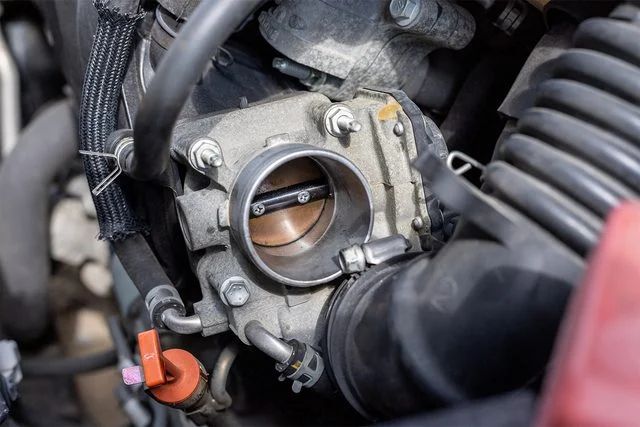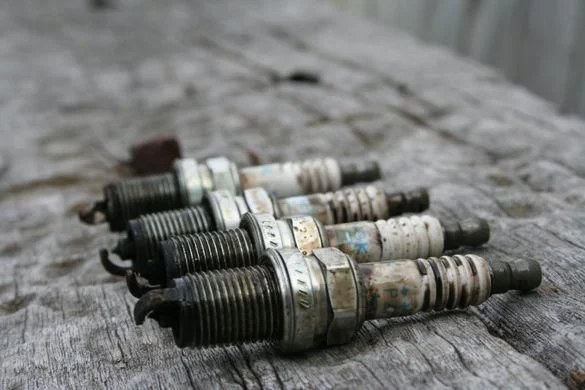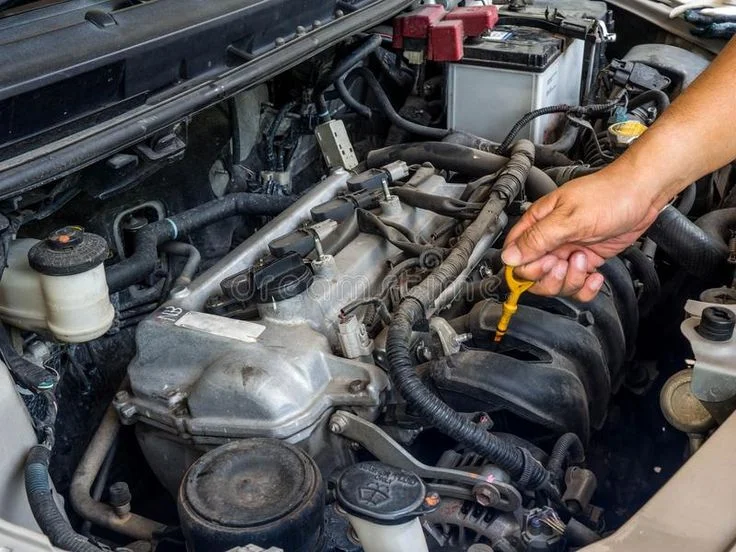74% of fleet technicians struggle with intermittent idle problems, yet the top performing 25% achieve 92% first time fix rates by following systematic diagnostic protocols that most shops completely ignore.
In my years working on engines that "run perfectly except for that little shake at idle," I've discovered something disturbing. Most drivers become so accustomed to their engine's quirks that they develop an almost affectionate tolerance for problems that should terrify them. "She's always been a little rough when stopped, but she gets me where I need to go." “The engine shudders a bit, but I know it's fine once I give it some gas.”
These seemingly harmless accommodations mask a progressive failure pattern that ends the same way every time: complete engine shutdown, often at the worst possible moment. What drivers don't realize is that rough idle isn't personality, it's your engine's way of announcing that critical systems are failing, and the window between "minor annoyance" and "catastrophic breakdown" is measured in days or weeks, not months.
Understanding why engines struggle at idle before sudden failure and recognizing the hidden culprits behind these symptoms could mean the difference between a $200 repair and a complete engine replacement.
What's Really Happening During Rough Idle
Modern engines depend on precise coordination between fuel delivery, air intake, and ignition timing to maintain stable idle. When your engine shakes, surges, or struggles to maintain consistent RPM at idle, it's broadcasting that one or more of these critical systems is failing.
The most overlooked culprit is carbon buildup in gasoline direct injection (GDI) engines. These systems inject fuel directly into the combustion chamber at high pressure, but they lack the cleaning action that traditional port injection provides to intake valves. Over time, oil vapors and combustion byproducts create thick carbon deposits on the backs of intake valves.
As these deposits accumulate, they alter airflow patterns and reduce effective valve opening area. Your engine control module compensates by adjusting fuel delivery and ignition timing, but these adaptations have limits. Once carbon buildup exceeds the system's ability to compensate, idle quality deteriorates rapidly.
The insidious nature of carbon-related idle problems is their progressive onset. You might notice slight roughness only when stopped at traffic lights with the air conditioning running. Over weeks or months, the roughness becomes more frequent and pronounced. Eventually, the engine struggles to idle at all, forcing you to keep your foot on the accelerator pedal to prevent stalling.
What makes this particularly dangerous is that GDI engines can run perfectly at highway speeds while harboring severe carbon buildup. The higher airflow velocities and temperatures help mask valve sealing problems that become critical at idle.
The Idle Air Control System's Silent Failure
Your engine's idle speed is controlled by a sophisticated system that meters precise amounts of air to maintain target RPM. The Idle Air Control (IAC) valve acts as the primary gatekeeper, allowing additional air to bypass the closed throttle plate during idle conditions.
When IAC valves become contaminated with carbon deposits or fuel residue, they lose their ability to maintain consistent airflow. The result is the hunting idle that many drivers learn to live with, RPM that fluctuates between 500 and 1200, creating a rhythmic surging sensation that feels almost like a heartbeat.
Most drivers adapt to IAC problems by unconsciously adjusting their driving habits. You might find yourself giving the engine a slight throttle input at red lights to prevent stalling, or avoiding situations where extended idling is required. These accommodations allow the underlying problem to worsen while you remain unaware of the progression.
The failure pattern typically follows a predictable sequence. Initial symptoms include slightly erratic idle speed that occurs intermittently, usually when the engine is warm and under electrical load from accessories. As carbon buildup increases, the symptoms become more frequent and pronounced, eventually leading to complete stalling at idle.
The financial implications are substantial. Early IAC cleaning or replacement typically costs $150-300. Once the problem progresses to include contaminated throttle bodies, intake manifolds, and fuel system components, repair costs can exceed $1,200.
How "Minor" Problems Cascade Into Major Failures
Engine systems are interconnected in ways that most drivers never consider. A failing component in one system creates additional stress on related components, leading to cascading failures that can destroy an entire engine.
Consider what happens when carbon buildup restricts intake valve operation. The engine control module detects the lean running condition and increases fuel delivery to compensate. This richer mixture creates additional carbon deposits, accelerating the buildup process. Simultaneously, the ECM advances ignition timing to maintain power output, increasing combustion temperatures and accelerating wear on pistons, rings, and valve seats.
The real danger emerges when multiple systems begin failing simultaneously. Carbon-fouled intake valves reduce volumetric efficiency, forcing the engine to work harder to produce the same power. This additional stress accelerates wear on timing chains, variable valve timing systems, and engine mounts. Eventually, what started as minor idle roughness evolves into timing chain stretch, VVT system failure, and potential internal engine damage.
I've seen engines with less than 80,000 miles require complete rebuilds because drivers ignored idle problems for too long. The pattern is always the same: minor roughness develops into severe idle instability, followed by check engine lights, misfires, and eventually complete loss of compression or catastrophic timing system failure.
What makes this progression particularly cruel is that intervention during the early stages typically costs under $500. Waiting until multiple systems fail can mean $4,000-8,000 in engine repairs or complete replacement.
The Direct Injection Carbon Trap
Gasoline Direct Injection technology has become widespread because it improves fuel economy and reduces emissions, but it's created a new category of problems that many technicians and drivers don't fully understand. Unlike traditional port injection systems that spray fuel over intake valves, GDI systems inject fuel directly into the combustion chamber.
This design eliminates the cleaning action that fuel provides to intake valves in port injection engines. Oil vapors from the crankcase ventilation system, combined with exhaust gas recirculation, create carbon deposits on intake valve backs. These deposits accumulate steadily, regardless of fuel quality or driving habits.
The symptoms progress in a predictable pattern. Initial stages present as rough idle only under specific conditions, typically when the engine is warm and electrical loads are high. Many drivers notice the problem only when stopped at drive-through windows or traffic lights with air conditioning running.
As deposits thicken, idle quality deteriorates across all conditions. The engine may require higher than normal idle speed to run smoothly, or it might surge between different RPM levels as the control system struggles to maintain stability. Eventually, the engine becomes impossible to idle smoothly regardless of temperature or load conditions.
Professional carbon cleaning services typically cost $400-800, depending on engine configuration and deposit severity. This maintenance should be performed every 15,000-20,000 miles on GDI engines to prevent serious problems. Drivers who skip this maintenance often face intake valve replacement costs exceeding $2,500 when deposits become too severe to clean effectively.
The Warning Signs You're Probably Ignoring
Engine idle problems rarely develop suddenly. Instead, they follow predictable warning patterns that most drivers either dismiss or adapt to rather than address. Recognizing these early warning signs enables intervention before minor problems become major failures.
The first sign is typically inconsistent idle behavior under specific conditions. You might notice slight roughness only when stopped with the air conditioning running, or perhaps the engine struggles to maintain smooth idle when fully warmed up but runs perfectly when cold. These selective symptoms indicate that compensation systems are beginning to reach their limits.
As problems progress, idle issues become more frequent and noticeable. The engine might develop a characteristic "hunting" behavior where RPM fluctuates rhythmically between different speeds. Many drivers describe this as feeling like the engine is "breathing" or has developed a "heartbeat" at idle.
Advanced symptoms include difficulty maintaining idle speed without throttle input, frequent stalling when coming to stops, and increased sensitivity to electrical loads. You might find yourself unconsciously keeping slight pressure on the accelerator pedal at red lights, or avoiding drive-through lanes because your engine struggles to idle reliably.
The most concerning progression involves intermittent check engine lights accompanied by rough idle. These codes often indicate misfires, lean running conditions, or fuel trim problems that suggest multiple system involvement. At this stage, simple cleaning or component replacement typically won't solve the underlying problem.
Your Action Plan Before It's Too Late
If your engine exhibits any idle instability, immediate professional diagnosis prevents minor issues from becoming catastrophic failures. Don't attempt to diagnose complex idle problems yourself, modern engine management systems require specialized equipment and expertise to analyze properly.
Document your idle problem patterns systematically. Note when roughness occurs (cold, warm, with accessories on/off), how severe it feels, and whether it's getting worse over time. This information helps technicians identify specific system failures quickly, reducing diagnostic time and costs.
Schedule professional evaluation within one week of noticing consistent idle problems. Many reputable shops offer comprehensive engine health assessments that can identify carbon buildup, IAC problems, and fuel system issues before they cause serious damage.
For GDI engines, establish preventive carbon cleaning schedules regardless of current symptoms. This maintenance should occur every 15,000-20,000 miles to prevent deposit accumulation that leads to expensive repairs. The cost of preventive cleaning is always less than remedial repairs.
Most importantly, stop accommodating idle problems in your driving habits. The moment you find yourself avoiding certain situations, adjusting your driving style, or making excuses for your engine's behavior, you need immediate professional attention.
Your engine's rough idle isn't a personality quirk or acceptable aging symptom, it's an urgent mechanical warning that demands swift action. The difference between a $400 carbon cleaning and a $6,000 engine rebuild often comes down to how quickly you respond to these early warning signals.
Every rough idle is your engine asking for help. The question isn't whether you'll eventually need major engine work, it's whether you'll address the problem while it's still affordable to fix.



Comments (0)
Please login to join the discussion
Be the first to comment on this article!
Share your thoughts and start the discussion